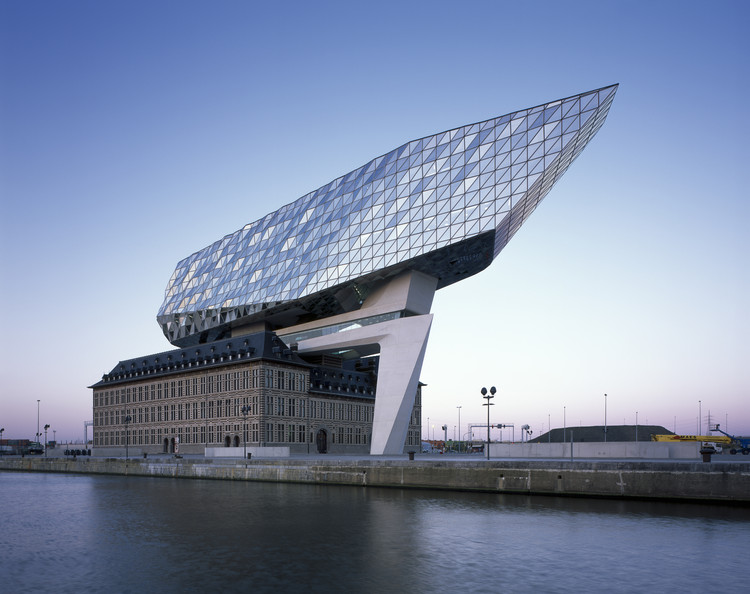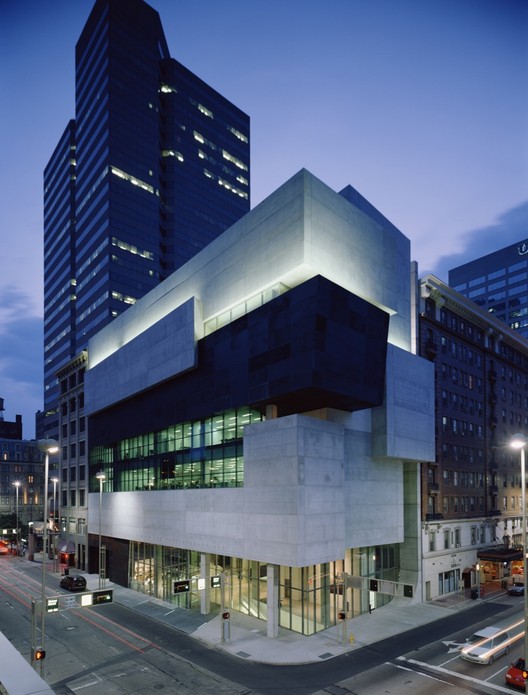
-
Architects: Gustafson Porter + Bowman
- Area: 135000 m²
- Year: 2006
-
Manufacturers: Chinese granite, Gravvellux, Stelcon
-
Professionals: Marcus bv, Northcroft Belgium sa, Arup, Tauw, Pieters Bouwtechniek





Observing the architectural landscape today it’s clear that the type of work which is currently ascendant, particularly among young practices, is very different to what came before the financial crisis of 2008. But what, exactly, does that architectural landscape look like? In an essay titled “Well into the 21st Century” in the latest issue of El Croquis, Alejandro Zaera-Polo outlined a 21st-century taxonomy of architecture, attempting to define and categorize the various new forms of practice that have grown in popularity in the years since—and as a political response to—the economic crisis.
The categories defined by Zaera-Polo encompass seven broad political positions: The “Activists,” who reject architecture’s dependence on market forces by operating largely outside the market, with a focus on community building projects, direct engagement with construction, and non-conventional funding strategies; then there are the “Populists,” whose work is calibrated to reconnect with the populace thanks to a media-friendly, diagrammatic approach to architectural form; next are the “New Historicists,” whose riposte to the “end of history” hailed by neoliberalism is an embrace of historically-informed design; the “Skeptics,” whose existential response to the collapse of the system is in part a return to postmodern critical discourse and in part an exploration of contingency and playfulness through an architecture of artificial materials and bright colors; the “Material Fundamentalists,” who returned to a tactile and virtuoso use of materials in response to the visual spectacle of pre-crash architecture; practitioners of “Austerity Chic,” a kind of architectural “normcore” (to borrow a term from fashion) which focuses primarily on the production process, and resulting performance, of architecture; and finally the “Techno-Critical,” a group of practices largely producing speculative architecture, whose work builds upon but also remains critical of the data-driven parametricism of their predecessors.
As a follow-up to that essay, Zaera-Polo and Guillermo Fernandez-Abascal set out to apply the newly-defined categories to the emerging practices of today with a nuanced “political compass” diagram. They invited practices to respond to their categorization in order to unveil the complex interdependencies and self-image of these political stances. For the first time, here ArchDaily publishes the results of that exercise.


This month London's Design Museum will officially open its new home on Kensington High Street. The project, which has been redeveloped and designed in collaboration with Rotterdam-based practice OMA and London-based studio Allies & Morrison, has seen a Grade II* Listed Modernist monument sensitively restored into contemporary galleries. For John Pawson—who has been commissioned to create "a series of calm, atmospheric spaces" ordered around a large, oak-lined atrium—this scheme marks his first major public work.
.jpg?1478766358)


Caruso St John Architects has won the top prize in British architecture, the RIBA Stirling Prize for their Newport Street Gallery in Vauxhall, London, beating out competition from Herzog & de Meuron, Michael Laird Architects + Reiach and Hall Architects, Loyn & Co Architects, dRMM Architects and WilkinsonEyre.
Designed as a free public gallery to house artist Damien Hirst’s private art collection, Caruso St John’s scheme sandwiches three restored Victorian-era industrial buildings between two new structures, one of which features a distinct saw-tooth roof.
"This highly accomplished and expertly detailed art gallery is a bold and confident contribution to the best of UK architecture. Caruso St John’s approach to conservation is irreverent yet sensitive and achieves a clever solution that expresses a poetic juxtaposition of old and new," said the jury in their citation.


The Royal Institute of British Architects (RIBA) has announced six projects that will compete for the 2016 Stirling Prize, the award for the building that has made the greatest contribution to British architecture in the first year. Selected from the pool of regional winners around the country, the shortlisted buildings range from a small house in the south of England to a new college campus in Glasgow, Scotland. However, in a first for the Stirling Prize, the shortlist features two buildings coming from one client, Oxford University.
"Every one of the six buildings shortlisted today illustrates the huge benefit that well-designed buildings can bring to people’s lives," said RIBA President Jane Duncan. "With the dominance of university and further education buildings on the shortlist, it is clear that quality architecture’s main patrons this year are from the education sector. I commend these enlightened clients and supporters who have bestowed such remarkable education buildings."
The winner of the Stirling Prize will be announced on Thursday 6 October.

After announcing the list of 2016 National Awards yesterday, the Royal Institute of British Architects (RIBA) has released today the longlist for the 2016 House of the Year Award. Given to the best new house or extension in the UK, this year’s list features residential architecture of all different sites and sizes. Last year’s top prize was awarded to Skene Catling De La Pena's Flint House for their earthly, sloping addition to the Buckinghamshire countryside.
Find the complete longlist after the break.

The Royal Institute of British Architects (RIBA) has announced the winners of the 2016 RIBA National Awards. The shortlist for the RIBA Stirling Prize for the UK’s best building of the year will be drawn from these 46 award-winning buildings.

From a shortlist of 68 buildings, 36 London projects have been awarded the 2016 RIBA London Awards for architectural excellence, the city's most prestigious design honor. The winners include a home for ravens, a Japanese-inspired London terrace home and a historical restoration. All of these designs will be further considered for the RIBA National Awards, to be announced in July. The winners of the national award will then create a shortlist for the RIBA Stirling Prize – the highest award for architecture in the UK.

The belief that a building can both blend in and stand out at the same time is embodied by the Lois and Richard Rosenthal Center for Contemporary Art (CAC), located in Cincinnati. Though it's heavy volumetric massing makes it appear as an independent and impenetrable sculptural element, the Rosenthal Center is in fact designed to pull the city in – past its walls and up, toward the sky. This inherent dynamism is well-suited to a gallery which does not hold a permanent collection, and is situated at the heart of a thriving Midwestern city.

The Royal Institute of British Architects (RIBA) has announced six winners for its RIBA South East Awards, which recognize architectural excellence in the regions of Kent, Surrey, East Sussex, West Sussex and the Channel Islands. These winners will be considered for a RIBA National Award, which will be announced on June 23. Winners of the National Award will then be eligible for the RIBA Stirling Prize later in the year.
